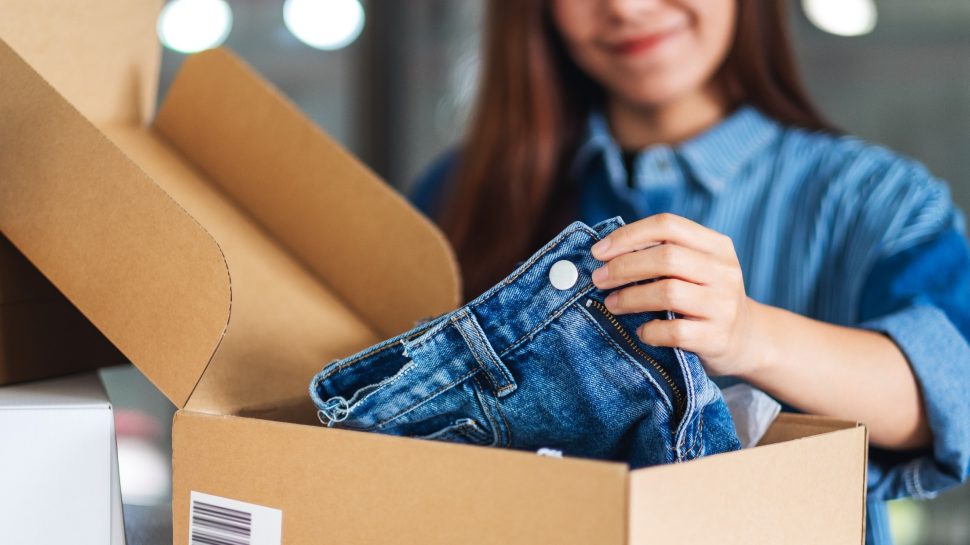6 online shopping trends set to shake up eCommerce in 2024
Tracking the trends in eCommerce can be a tricky business. But not when you’ve got data and insights to back up your predictions. Let’s take a look at the key findings from the 2024 Inside Australian Online Shopping Report.

Staying ahead of eCommerce trends can help small businesses capitalise on opportunities in 2024.
Key points
- Despite tough economic conditions last year, eCommerce remains strong in Australia.
- In 2024, changing customer expectations are driving online shopping trends like more generous returns, transparency in sustainability marketing, and next-day deliveries.
- Behind the scenes, eCommerce businesses can also explore trends like AI adoption, recommerce and pop-up shops.
What’s trending in eCommerce?
What with interest rate rises, inflation and cost-of-living pressures, many Australian consumers have pressed pause on discretionary spending in the past year. Yet, despite the tough economic conditions, eCommerce has continued to pick up pace—with 9.5 million Aussie households shopping online in 2023. And while they might not have spent as much overall as previous years, they bought more items, more often.1
As consumers continue to change what, where and how they shop online, how can online retailers like you keep pace? By keeping one eye on the trends shaping the retail industry, that’s how. Let’s explore what’s new in online shopping for 2024.
1. Earn greater loyalty with generous returns
Today, nearly 76% of online shoppers would read your website’s return policy before placing an order.2 Clearly, returns matter—and could influence whether a consumer buys from you or not.
Investing in a customer-friendly returns policy can reap dividends. It’s what homewares retailer, Adairs, has done with its 90-day returns policy for members of their Linen Lovers program. This perk was initially introduced during the pandemic, but they have decided to continue with it given how positively customers respond.
“Making sure that we have happy, loyal Linen Lovers is a huge priority for us. We know that our Linen Lovers spend more on average, visit stores more on average, and shop online and in-store more as well,” says Emma Porter, Senior CRM & Loyalty Manager at Adairs. “It’s about trying to be as flexible as we can and making the customer experience as nice as possible.”
To tap into this trend, take a good look at your returns policy and assess how appealing it is to your customers. For example, you could offer rewards or discounts to customers who make fewer returns, or use customer data to tailor your returns policy to suit different customers. Then, just make sure you clearly communicate this policy at different points of the purchase journey—so there are no surprises.
2. Pop up in places your brand can be seen
Sure, pure-play online stores can be more economical to run. Yet there’s a trade-off. Customers can’t touch or try your products. Nor can they be persuaded, in-person, that the item they’re trying is just right for them.
There’s no doubt that having a physical store or presence can help boost sales. In fact, 90% of online-only businesses are considering opening one in the next two years.3 And to avoid skyrocketing rents, many are turning to pop-up shops instead.
From market stalls to temporary installations in empty shopfronts, pop-up shops help bring your brand to the people. It certainly worked for WAW Handplanes, which started out at Manly Markets. “The markets are on the beachfront, so I knew that our potential customers would be there already. It’s also a popular spot. I thought it would be a great place to test-run our products in front of our potential target audience and see what they thought,” says Rikki Gilbey, Australia Post 2023 Local Business Hero and founder of the company.
“It was my first real market research, putting the handplanes in front of strangers’ faces. You don’t get that immediate feedback online.”
To tap into this trend, think about the ideal location for your pop-up store. That is, the type of place or space your target demographic is most likely to be. Then, create memorable moments within your pop-up—like a selfie wall, neon sign or freebies—to encourage shoppers to share on social media.
3. Embrace the renaissance of recommerce
According to eBay, 90% of buyers engaged in recommerce in 2022.4 And the trend shows no signs of abating, with the act of buying pre-loved products buoyed by the fact that it helps shoppers save money—while helping reduce waste and carbon emissions.
Increasingly, brands are jumping on board with recommerce, too. Australian online fashion retailer birdsnest launched birdsnest rehatched in late 2022, giving shoppers the opportunity to buy ‘like-new’ secondhand items at a cheaper rate.
Birdsnest founder Jane Cay explains. “Birdsnest rehatched is part of us taking responsibility for the clothing we bring into the world. Our goal is to make participating in a more circular fashion economy simple, fun and convenient for our community as that will naturally changing shopping habits and extending the life cycle of our clothes.”
If you’re thinking about tapping the recommerce trend, you’ll need to consider your strategy. Think about everything from stock acquisition, re-sale marketing, logistics and more. But the effort is worth it—with the opportunity to diversify your revenue stream while becoming a more sustainable business. Which leads us to the next trend.
4. Be transparent in your sustainability marketing
While sustainability is not new, the way brands approach it is changing.
With 93% of Gen Zs prioritising sustainability and ethical practices when making purchase decisions, and with 62% of shoppers willing to pay extra for products that align with their values,2 sustainability has become a key selling point for brands. But transparency is key—without it, you run the real risk of reputational damage or even expensive litigation.
To be transparent in your sustainability marketing, you need to be open and honest. It’s highly unlikely that your brand has a perfect track record in the sustainability stakes—that’s OK. If you’re honest with your customers about the journey you’re on and the effort you’re making, then that should be enough to win them over.
5. Explore the role AI can play
AI is everywhere right now. And for good reason—it helps with everything from making data-driven business decisions to elevating the customer experience.
While AI adoption can feel daunting, it’s certainly worth the effort, as Sarah Carney, National Technology Officer at Microsoft Australia and New Zealand explains. “AI can be used to automate mundane tasks, streamline order processing and validation and provide predictive analytics to identify growth markets and manage inventory,” she says.
From a consumer perspective, Sarah says, “In the coming years, we expect frontline retail staff to be able to personalise in-store experiences as effectively as online, using AI and data points, to tailor offers based on customer preferences and purchase locations.”
Whether you use it to automate repetitive tasks, optimise social or marketing content, or some other retail-specific use case, one thing’s for sure. What we’re seeing today with AI is only the tip of the iceberg, and jumping on board with this trend now will help give you a head start over the competition.
6. Offer next-day deliveries
With 68% of shoppers likely to abandon their cart if they feel your delivery method is too slow,5 speedy shipping is the final eCommerce trend on our radar this year. Customers today are more impatient than ever—they want to get their hands on their new purchases, pronto. In fact, 80% of consumers will pay an extra $3 to $5 to get an item they really need, next day.6
It's why iconic Aussie brands like Myer are using Australia Post’s next-day and express delivery services. “At Myer, we aim to provide the best possible online shopping experience for customers. But we’ve seen shoppers’ behaviour change over the past few years—people need things delivered sooner and want a wider range of delivery options available to them,” says Tony Carr, Executive General Manager of Supply Chain, Myer.
“We needed a partner that can deliver the complete package for us and our customers. Someone to help us offer an online shopping experience that delivers for modern-day customers who want things now, not later.”
As well as the familiar Express Post service, Myer uses Australia Post Metro in Sydney, Melbourne and Brisbane. This service, which includes late pick-ups (up to 8pm), gets a customer’s parcel to their door or a Parcel Locker the very next day—as long as they live in the same state.
Want more insights?
For a deeper dive into the online shopping trends shaping the retail industry in 2024, read our 2024 Inside Australian Online Shopping Report today.
Ready to elevate your business in 2024?
Ready to elevate your business in 2024?
The free 2024 Inside Australian Online Shopping: eCommerce Industry Report is now available. Uncover valuable insights from the previous year and stay ahead of the game.
1 Inside Australian Online Shopping, Australia Post, 2024
2 Australia Post Omnibus Consumer Survey, Nov 2023
3 Australia Post Omnibus SMB Survey, Nov 2023
4 eBay Recommerce Report, 2022
5 PowerRetail Trajectory Report, 2021
6 Australia Post Consumer Segmentation Research Wave 7, June 2023



